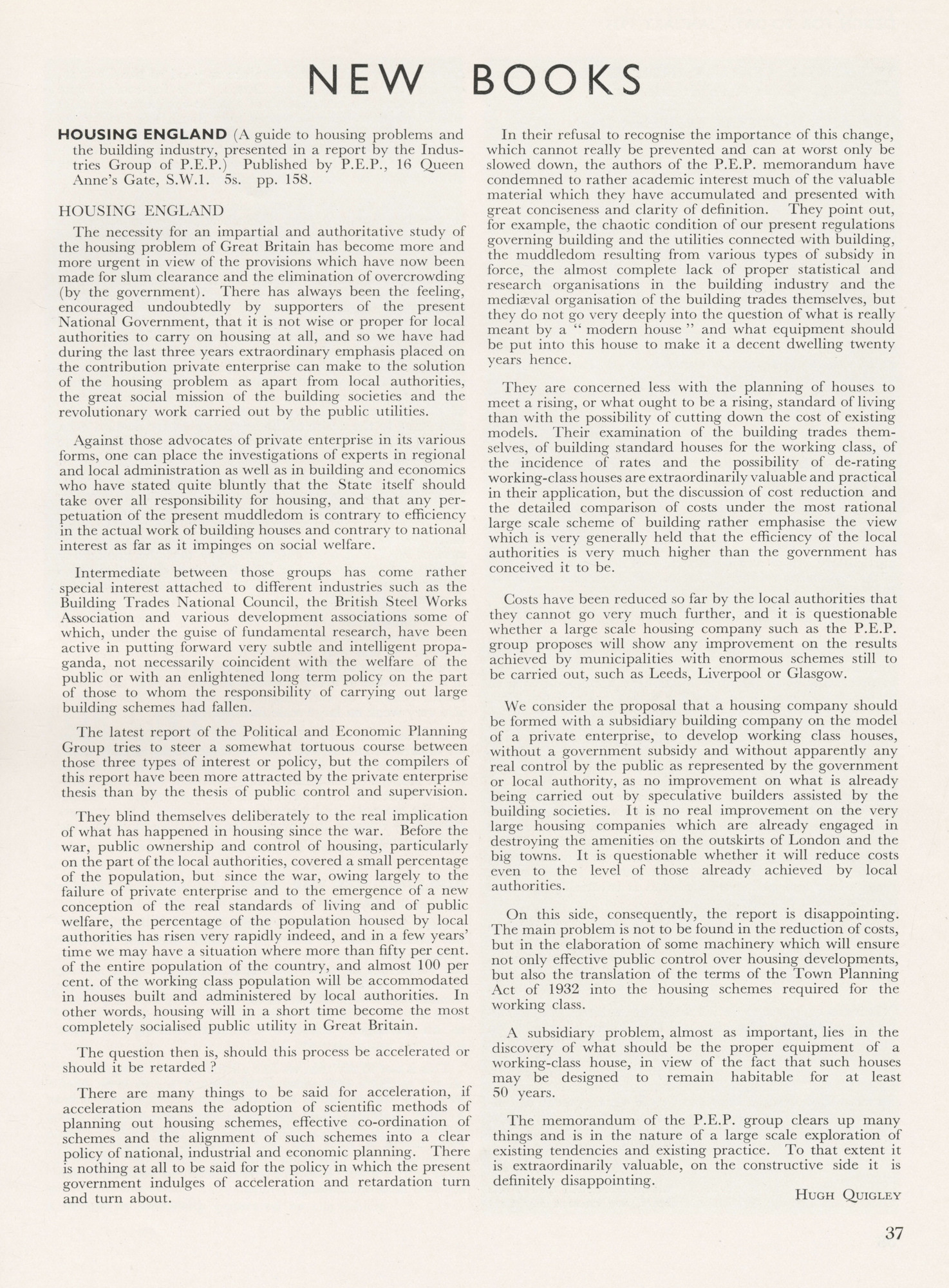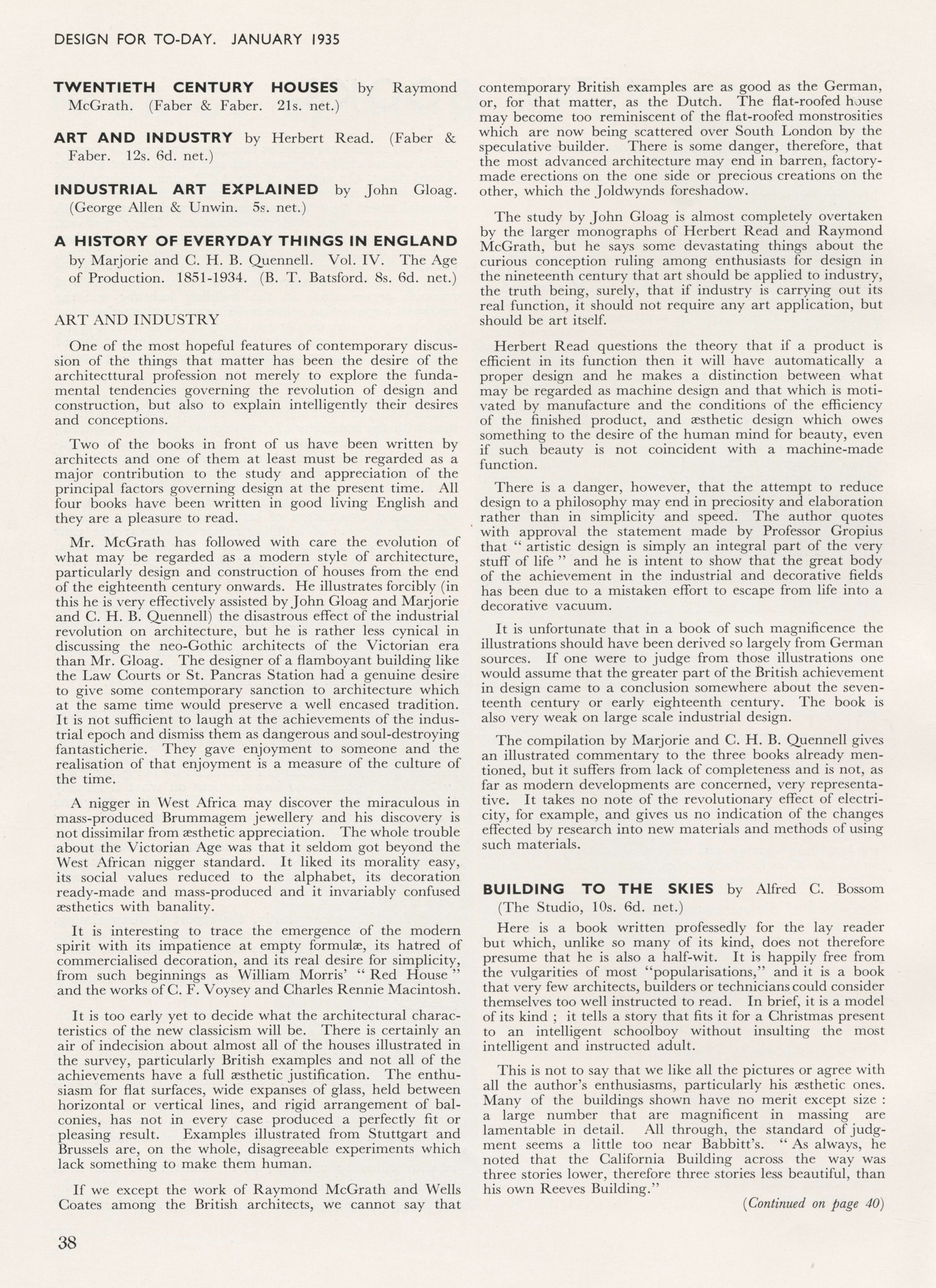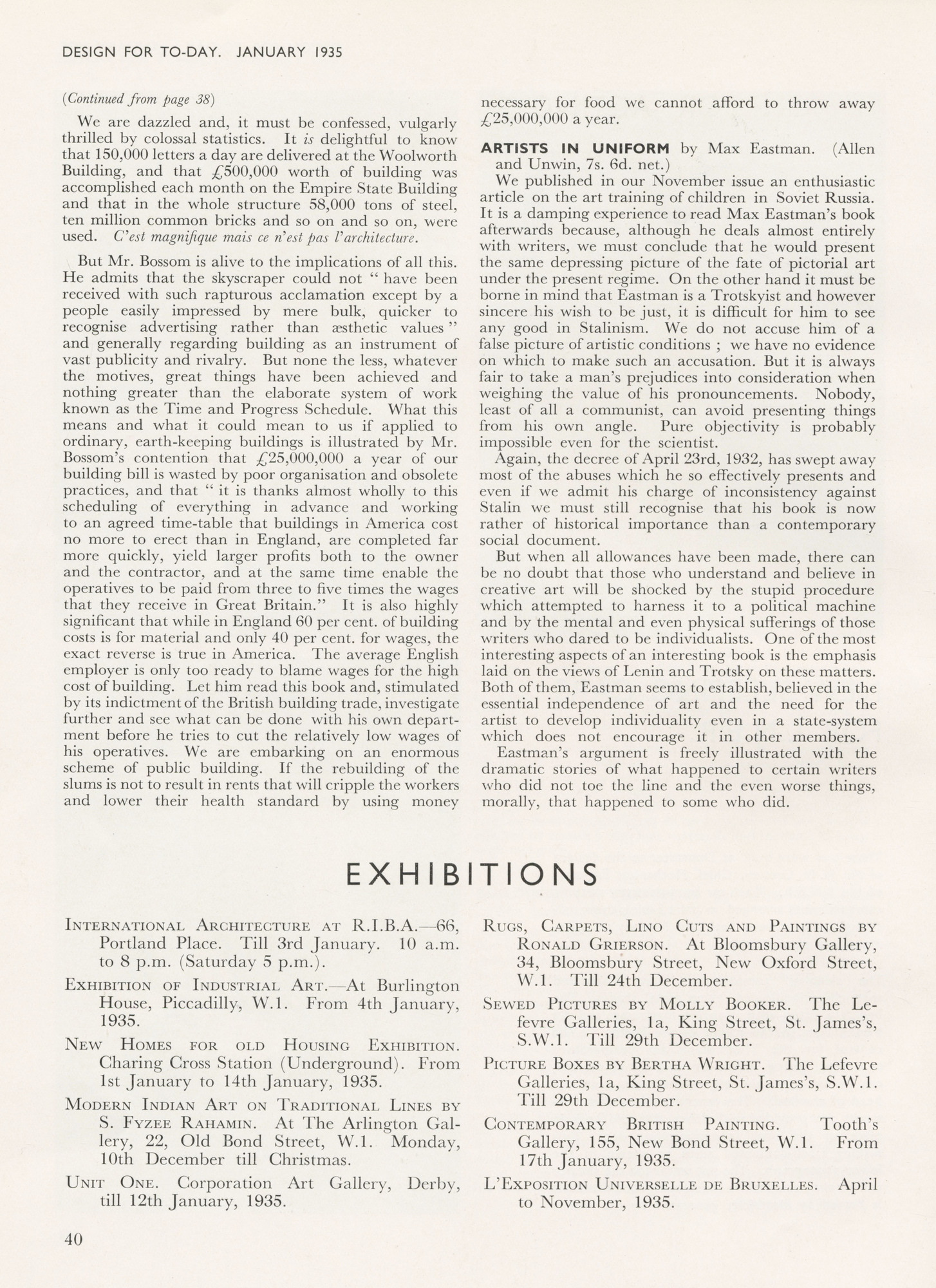1 of
You are browsing the full text of the article: New Books
Click here to go back to the list of articles for
Issue:
Volume: 3 of Design For Today
| Design For Today 3 1935 Page: 37 | ||||||||||||||||||||||||||
| New Books | ||||||||||||||||||||||||||
|

|
|
||||||||||||||||||||||||
| Design For Today 3 1935 Page: 38 | ||||||||||||||||||||||||||
| New Books | ||||||||||||||||||||||||||
|

|
|
||||||||||||||||||||||||
| Design For Today 3 1935 Page: 40 | ||||||||||||||||||||||||||
| New Books | ||||||||||||||||||||||||||
|

|
|
||||||||||||||||||||||||


